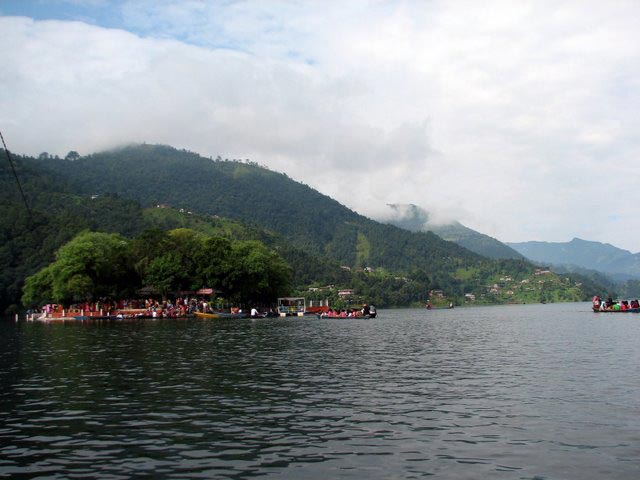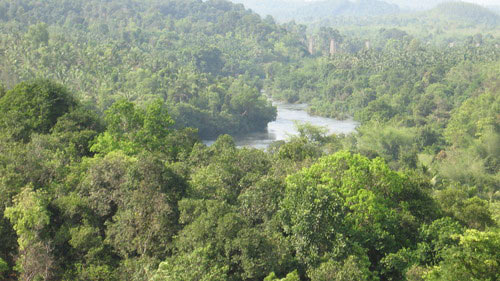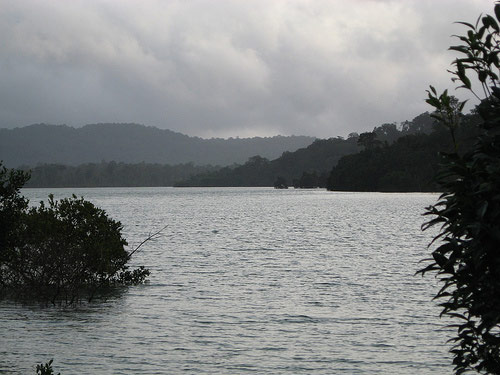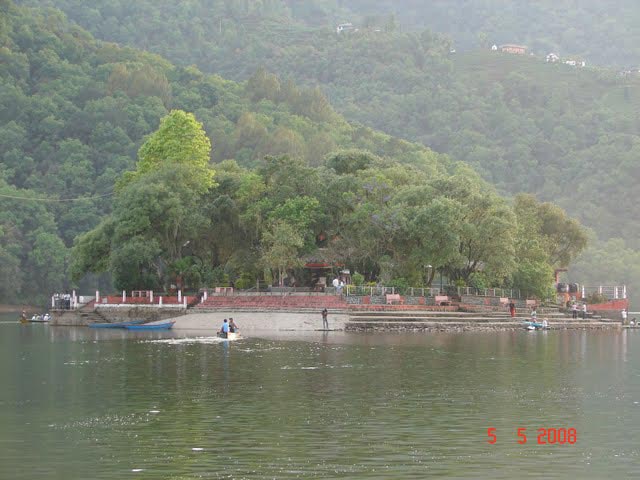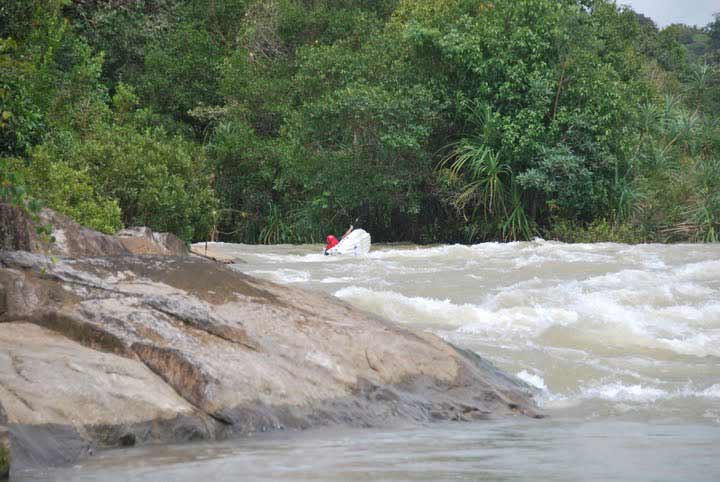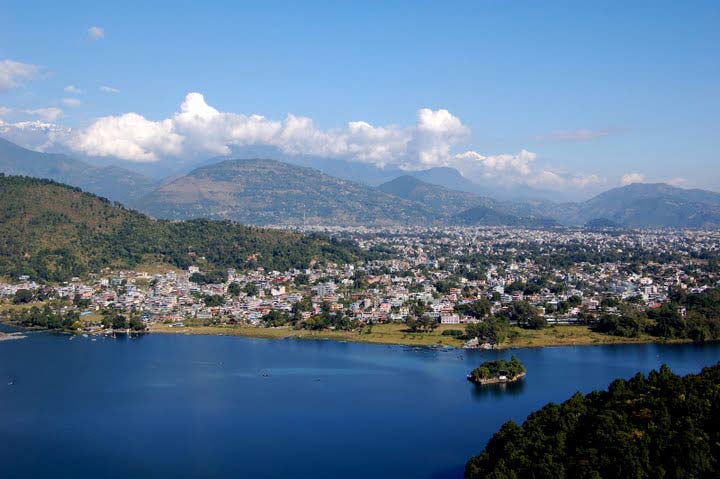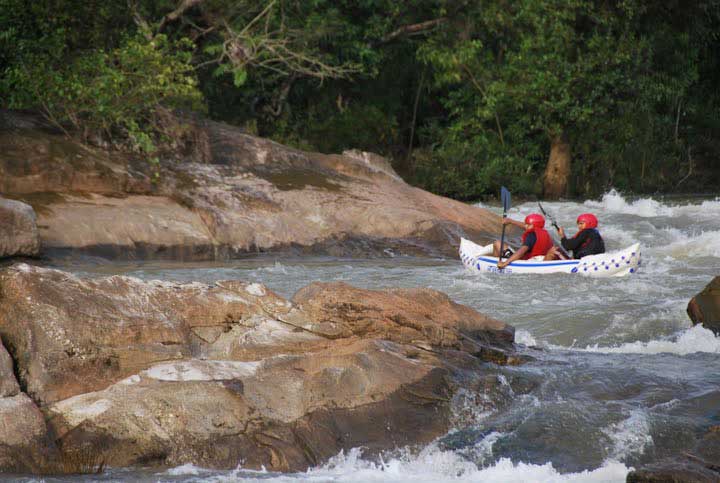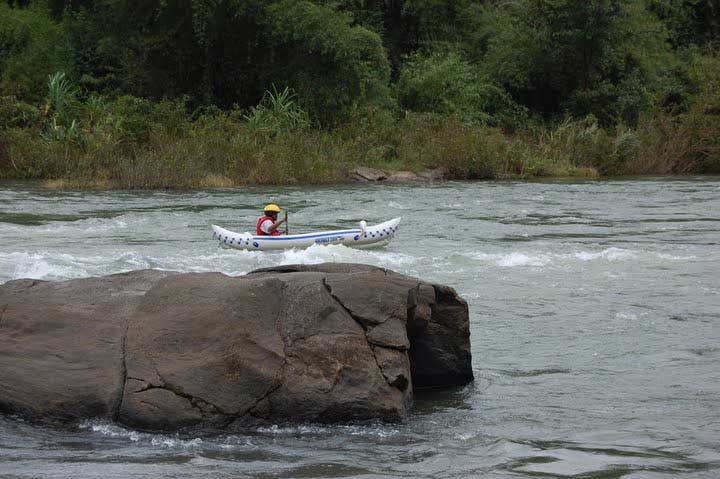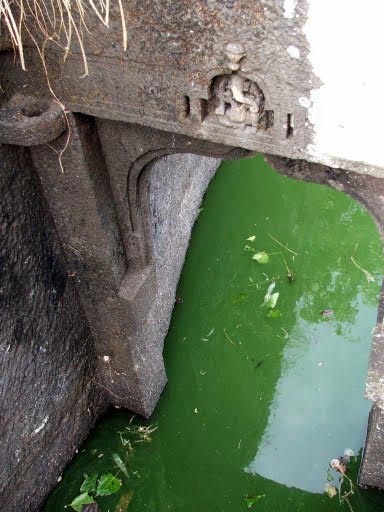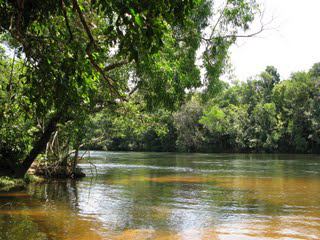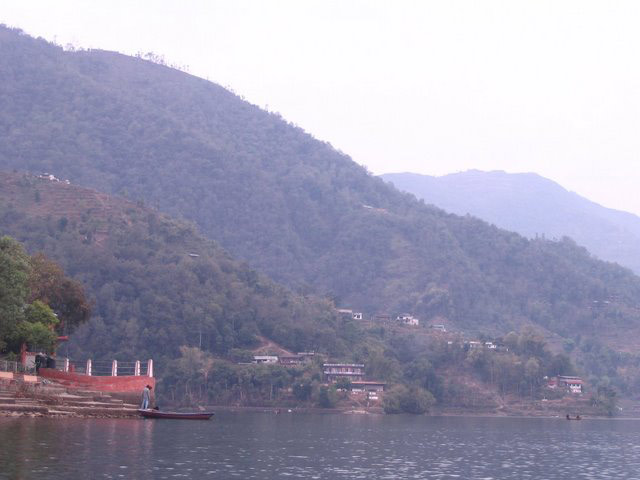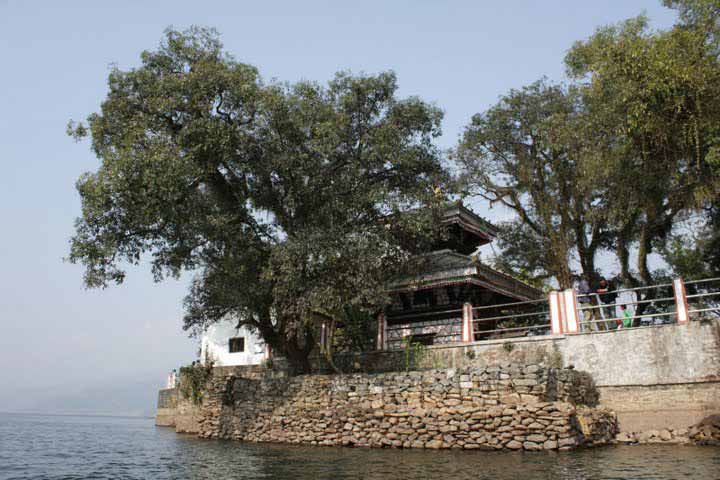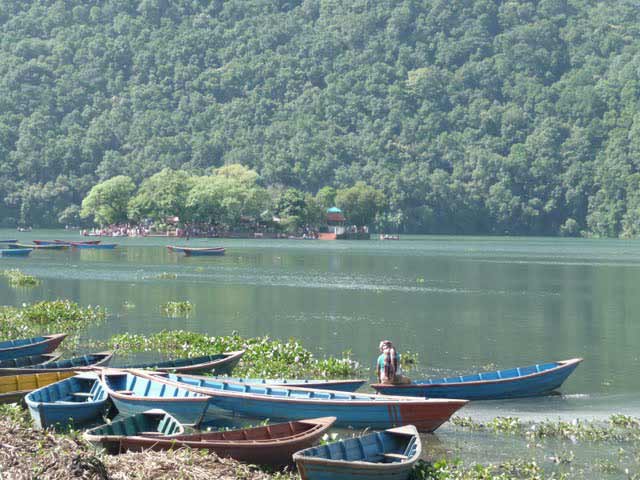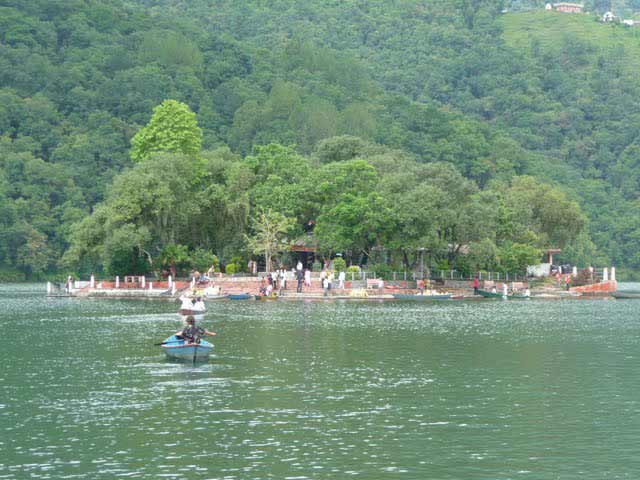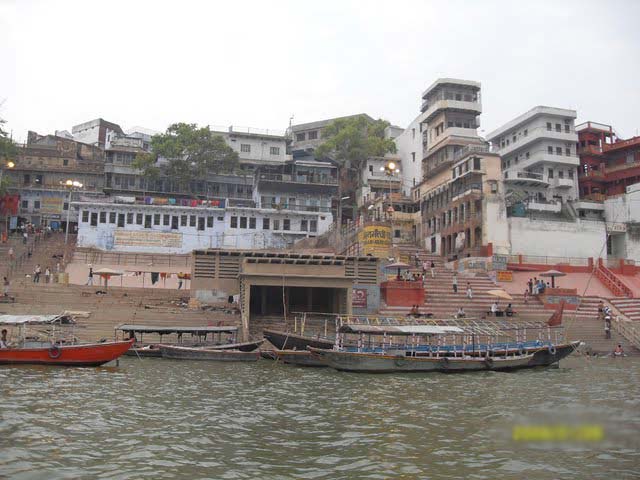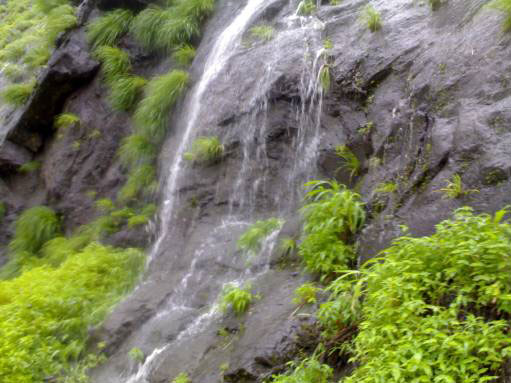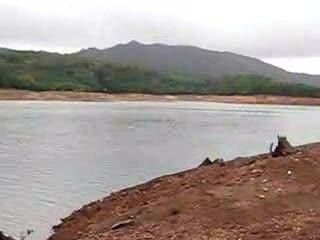Varahi River
Varahi River |
About: |
| Varahi River is a river flowing through Western Ghats to Basrur, Kundapur and Gungulli in western India. Varahi is a west flowing river which takes its birth in the Western Ghats at Hebbagilu, near Agumbe in Shimoga District. This river has a total length of 66 km and a catchment area of about 759 sq km. It joins with the Souparnika River, Kedaka River, Chakra River, and Kubja River and after a long journey, the Varahi River finally meets the Arabian Sea near Kundapura. There is a dam across Varahi river constructed for producing of electricity. Dam has been constructed near Yadur. Many places surrounding the area have been covered by water due to this.The powerful river, after 25 km, falls 455 m in cascades to form the lush Kunchikal falls.
The major attraction of the Varahi River is the river rafting which is conducted throughout the year except during the monsoon season (June-Aug). The Sankaranarayana temple is situated on the banks of the Varahi River. About Simoga:Shimoga is locally called as Shiva-mogga. The name shimoga is derived from the term Shiva-Mukha, literally meaning "Face of Shiva". Shimoga District is a part of naturally rich Malnad (Malenaadu) region of Karnataka. Shimoga is a true picture of nature's bounty-landscapes dotted with waterfalls, swaying palms and lush paddy fields make for picturesque locales. Shimoga is 273 kms southwest of Bangalore. Shimoga district is bounded by the districts of Chikmagalur to the southeast, Davanagere to the east, Haveri to the northeast, Udupi to the southwest, and North Canara (Uttara Kannada) to the northwest. Shimoga district is also known as the Rice Bowl of Karnataka state. Shimoga district consists of seven taluks namely Shimoga, Sagara, Thirthahalli, Hosanagara, Bhadravathi, Shikaripur and Soraba. The rivers Sharavathi, Varada, Tungabhadra and Kumudavathi inundate the luxuriant greens of the region. The Sharavathi Hydel Project and Varahi Project provide a substantial portion of Karnataka's power needs. |
Location info: |
| Address:Varahi River is a river flowing through Western Ghats to Basrur, Kundapur and Gungulli in western India. Varahi is a west flowing river which takes its birth in the Western Ghats at Hebbagilu, near Agumbe in Shimoga District. |
| District:Shimoga District |
| Nearest City:Hebbagilu |
| Best time to visit: Throughout the year except during the monsoon season (June-Aug). |
Climate/Weather: |
|
The climate around the Varahi River and Shimoga region is tropical and generally humid, with significant rainfall during the monsoon season. The year can be divided into three main seasons:
Overall, the best time to visit the Varahi River and Shimoga is during the winter months (October to February) when the weather is pleasant and outdoor activities are enjoyable. |
History: |
| Shimoga was ruled by the great Indian dynasties of the Kadambas, Chalukyas, Gangas, Rashtrakutas, Hoysals, Vijayanagar Kings, Keladi Nayakas and Mysore Maharajas. Shimoga got an independent identity under the Keladi Nayakas in the 16th century. It reached its pinnacle during the rule of Shivappa Nayaka in 16th century. |
Interesting things to do: |
| Rafting in Varahi river is on at Anejari Nisarga Dama near Kollur. Rafting in Varahi river starts from Hosangady to New Bridge covering 24 kms or from Hosangady to Hole Shankaranarayan covering 18 kms. Here rafting can be done throughout the year. |
Interesting things to Visit: |
| Kundeswara temple is within the town, with big arches. Kundapura town is surrounded on three sides by water / back water - and as such one can find good scenes of water and coconut trees all around. The boat point to Gangolli is one such beautiful place, with vast area of back waters of Haladi river, which joins Arabian Sea nearby. From this point, the range of Western Ghats at a distance of 20 km, including highest peak Kodachadri is a beautiful sight. The three-sides- water- town concept of Kundapur is not exploited to develop tourism industry in this area. There are good number of lodges in this town and well connected by Highway to Mumbai, it has good potential to develop as a scenic place.
Sri Vinayaka (Ganesh) Temple at Anegudde, between Kota and Koteshwar towns. (5 k.m. from Kundapura) The area where the temple stands is called Kumbhashi. Among the several temples in Kumbhashi Anegudde, Sri Vinayaka Temple is the oldest, and it is also the most popular in this region. This Ganesh temple is on a small hillock, giving the name Anegudde, "Ane" meaning elephant and "Gudde" meaning a hillock (in kannada). Basrur - Many temples are located here on the southern banks of the river Varahi. History says Basrur is main and center place of Kundapura Taluk and it has several historical structures. Uppinakudru - Uppinakudru or salt island is located at 6Km towards north of Kundapura which is a taluk headquarters in Udupi District (Karnataka , India) . Hoovinakere - It is the birthplace of the philosopher Vadiraja, who preached Dvaita philosophy after Madhvacharya. |
Mobile Range Info: |
|
The mobile network coverage around the Varahi River and Shimoga region can be patchy, particularly in remote areas near the Western Ghats. However, major telecom providers like Jio, Airtel, and BSNL generally offer decent coverage in the following areas:
For travelers venturing into remote areas, it is recommended to carry a BSNL SIM card for better coverage, and keep in mind that internet speeds may be limited in rural locations. Emergency services are accessible in urban areas with good network availability. |
How to reach? |
| Nearest Railway Station:Kundapur is also connected by Konkan Railway which runs through Mumbai, Mangalore. Kundapur Railway station is about 4 km from town. |
| Nearest Airport:The nearest air port is Mangalore Situated around 100 km from kundapur. |
| Road Transport:Kundapur is well connected by Road to Parts of the country. There are buses to Kundapura from Udupi - the bus service is very hot and moving. One can also see Saligrama, Brahmavara while going to Kundapura from Udupi. |
Nearest Visiting places: |
| 1. Jog Falls
2. Agumbe: Agumbe attracts tourists during the summer and winter season because of its unforgettable glorious sunset. Agumbe is also known as the "Chirapunji" of South India because this place receives the highest rainfall in South India. 3. Kodachadri: This is the highest peak in Shimoga District. Kodachadri is around 120 kms from Shimoga this beautiful hill station is nestled in the Western Ghats. The famous Kollur is 12 Kms away from Kodachadri. 4. Achakanya Falls: 10 Kms from Thirthahalli on the way to Hosanagar near Aralsuruli you can find river Sharavathi takes a spectacular leap here to form this wonderfull falls. 5. Tunga Dam: 10 Kms from Shimoga city on the way to Thirthahalli, you can find a place called Gajanur. The Tunga dam is situated here. A ideal picnic spot for the people around. (Presently the dam is closed for general public as the dam height is being increased and construction work is going on. 6. Koodli: 16 Kms away from Shimoga. 7. Linganmakki Dam: Linganmakki dam is about 6 Kms from Jog falls this dam is constructed across river Sharavathi. The height of the Linganmakki dam is 1819 ft above sea level. Linganmakki dam is the main feeder reservoir for the Mahatma Gandhi Hydro Electric Power unit. 8. Shivappa Naik Palace: This palace is situated on the banks of river tunga in the busy lanes of Shimoga city. This palace was built by Shivappa naik of Keladi in 16th century. A good architectual piece built with rose wood. The palace is equipped with museum which has several interesting and rare archaeological collections of stone carvings and antiques of Keladi period. 9. Mandagadde Bird Sanctuary, Gudavi Bird Sanctuaries, Tyarekoppa Lion Safari and Sakrebayalu Elephant Camp are not to be missed. |
Nearest Petrol Pump: |
|
For travelers in the Varahi River and Shimoga region, here are some of the nearest petrol pumps:
Travelers are advised to fill up their tanks in urban areas like Shimoga or Kundapura, especially if they are venturing into rural or remote regions where petrol pumps might be sparse. |
Hotels/Lodge/Accommodation: |
|
There are several accommodation options available near the Varahi River and in the Shimoga region for travelers:
With its proximity to Bangalore (approximately 350 km) and Mangalore, the Varahi River region offers a variety of accommodations, ranging from eco-lodges to luxury hotels, making it a popular destination for adventure enthusiasts and tourists alike. |
Things to Carry: |
|
When visiting the Varahi River and Shimoga region, especially for outdoor activities like river rafting and nature exploration, it's essential to carry the following items:
Being prepared with the right gear will enhance your experience while exploring the beautiful and adventurous Varahi River and Shimoga region. |
Tips & Suggestions: |
|
Here are some helpful tips and suggestions for visitors to the Varahi River and Shimoga region:
Following these tips and suggestions will ensure a safe and enjoyable experience while exploring the natural beauty and adventure that the Varahi River and Shimoga region have to offer. |
Help Line/Phone Number: |
| Police Station: Hebbagilu Police Station, Contact: +91-9876543210 |
| Nearest Hospital: Hebbagilu Primary Health Center, Contact: +91-9123456789 |
| Society/Community Phone Number: Varahi River Conservation Society, Contact: +91-9988776655 |
| Tourist Information Center: Shimoga District Tourist Office, Contact: +91-8765432109 |
| Emergency Services: General Emergency (Ambulance, Fire, etc.), Contact: 112 (India's national emergency number) |
Varahi River Nearest Attraction |
| Agumbe Hillstation |
| Agumbe, a small village located in Karnataka for all those who wish to find peace with nature in the western ghats. It is known to be the wettest region in Karnataka receiving highest rainfall. The tiny village is much known for its beautiful sunset and the trek opportunities it offer.....more |
| Sharavathi Valley Wildlife Sanctuary |
| Located in Shimoga District, Sharavathi Valley Wildlife Sanctuary spans over 431 sq km. Apart from the area occupied by the Liganamakki Reservoir or Honnemaradu, the sanctuary is divided into core zone, buffer zone and tourism zone.....more |
| Shettihalli Wildlife Sanctuary |
| Shettihalli Wildlife Sanctuary is located in Shimoga District of Karnataka. It spreads over 395 sq km of tropical evergreen and semi-evergreen forests. The sanctuary is inhabited by tiger, leopard, wild dog, jackal, gaur, elephant, sloth bear, sambar deer, spotted deer, wild pig,....more |
| Ikkeri Archeology |
| Ikkeri is situated in Shimoga district of Karnataka state at about 3 km to the south of Sagar. The word Ikkeri in Kannada means "Two Streets". This place was the capital of Keladi Nayakas for some years....more |
| Keladi |
| Keladi is 10 km away from Ikkeri and was the Nayaka capital. You enter the precincts with its several small shrines through a long-roofed wooden entrance.....more |
| Barkana Falls |
| Barkana Falls are among the ten highest waterfalls in India. They are located near Agumbe in Shimoga district of state of Karnataka. Barkana falls are formed by Sita river. Currently Barkana falls are the prime source of one of the hydro electric projects in Karnataka.....more |
| Honnemaradu Falls |
| Honnemaradu, the village, having been engulfed in the mid-1960s by the Liganamakki dam, has been literally resurrected today. This haven for water sport enthusiasts, tucked away in the lush greenery of the Western Ghats, is in the Shimoga District in north-west Karnataka, about 25 km from Sagar town on the way to Jog Falls.....more |
| Jog WaterFalls |
| The tallest and no doubt the most impressive waterfall in India, the Jog Falls(also known as the Gerusoppa waterfalls) is located about 400 kms from Bangalore in Karnataka. It is created by the Sharavathi River which comes down in cascades from a height of 292 meters at Gerusoppa in four distinct falls, called the Raja, Rani, Rover and Rocket.....more |
| Kunchikal Falls |
| Kunchikal Falls are the highest waterfalls in India and second highest waterfalls in Asia. They are located near Agumbe in Shimoga district of state of Karnataka. Kumchikal falls are formed by Varahi river. Currently Kunchikal falls are the prime source of one of the hydro electric projects in Karnataka.....more |
| Dandavathi River |
| Dandavathi is a river that flows in Sorab, India. It originates near Kuppe (Sorab taluk) and ends in the Varada river near Sagar. Sorab's Sri Ranganatha temple is built on the bay of the Dandavathi river.....more |
| Sharavathi River |
| Sharavathi is a river which originates and flows entirely within the state of Karnataka in India. It is one of the few westward flowing rivers of India and a major part of the river basin lies in the Western Ghats. The famous Jog Falls are formed by this river.....more |
| Varada river |
| Varada River, the only source of water for the Sagar town, is the major river of Shimoga District. Sagar is an industrial town in the heart of the Western Ghats, Sagar is located in Shimoga District of Karnataka. It is 75 km north-west of Shimoga.....more |
| Gudavi Bird Sanctuary |
| Sorab taluk of Shimoga district, comes alive in June as the energetic chirping of birds fills the air. The tree-lined banks of the Gudavi Lake become a brilliant mosaic of colours, with branches buried under bright plumage.....more |
| Mandagadde Bird Sanctuary |
| The Mandagadde Bird Sanctuary is situated in the Malenaadu region under the Shimoga district, towards Theerthahalli in Karnataka. The Mandagadde Bird Sanctuary has a spectacular collection of migratory birds.....more |
| Gajanur Dam |
| Gajanur is a village 12 km from Shivamogga in the Shivamogga District of Karnataka, India. The Tunga River flows through the village. Gajanur is well known for the dam built across the river.....more |
| Linganamakki dam |
| The Linganamakki dam was constructed by the Karnataka State Government in 1964. Located in the Sagara taluk, the dam has a length of 2.4 km, stretching across the Sharavathi river. It is located about 6 km from Jog Falls....more |
| Tunga Anicut Dam |
| Situiated 15 km from Shimoga, this dam was built across the river Tungabadra. You can enjoy boat trips around the lake. Situated around 15 Km from Shimoga, Tunga Anicut Dam is a popular choice for picnic among the locales.....more |
| Nagar |
| Nagar is a historically significant town located in the Shivamogga district of Karnataka, India. It is renowned for its connection to the Keladi Nayakas, who ruled parts of Karnataka during the late medieval period....more |
| Humbucha |
| Humbucha, also known as Hombuja or Humcha, is a significant historical and religious site located in the Shivamogga district of Karnataka, India. It holds special importance, particularly for followers of Jainism, due to its ancient temples and its connection with the Jain religion.....more |

